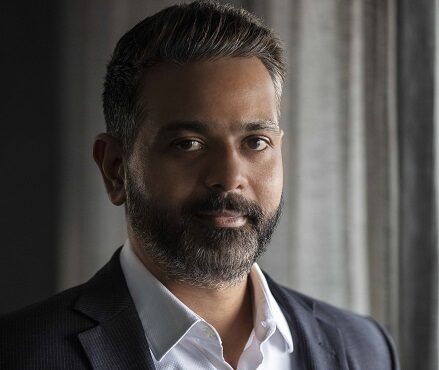
CXOToday has engaged in an exclusive interview with Herve Tessler, CEO of Noventiq and Vinod Nair, Sr. President Noventiq India.
Herve Tessler, CEO of Noventiq
- How do you perceive the current status of Digital Transformation in India?
India’s digital economy is expected to rise to something between US$500 billion – US$1 trillion by 2025, contributing to 20-25% of the country’s GDP. This shows how the country’s progress in Digital Transformation is notable and fueled by major technological advances and government initiatives.
The IT and start-up sectors are contributing significantly to the economy and promoting innovation across different industries. Digital applications in the financial sector have enabled greater access and inclusion for millions of people in India, as well as improved efficiency and transparency. The rise of e-commerce and digital services is also narrowing the urban-rural division by making essential services more accessible.
Additionally, the fast-paced adoption of AI, driven partly by investments from some of our tech giants’ partners like Microsoft, Google, and AWS, has become crucial for many countries, including India and its digital development.
- Can you suggest some of the most recent technologies contributing to the global digitization process?
Currently, Artificial Intelligence (AI) is at the forefront of digital transformation technologies. It is transforming nearly everything in our world, predominantly for the better. Generative AI and Natural Language Processing offer advanced content creation and language comprehension. This is evident in our AI solution, Weaver, an advanced AI-chatbot that’s reshaping customer interactions, as well as platforms like ChatGPT, Copilot by Microsoft, which we plan to integrate for our clients, and numerous other AI systems.
We could also talk about Blockchain which is reshaping transactions by offering secure and transparent methods, spurring global innovations. Meanwhile, Cloud Computing remains essential, providing scalable computing solutions that drive digital transformation.
- Are there any valuable insights that Indian businesses can gain from foreign companies regarding digital transformation?
We started Noventiq in India in 2014, with 2 people and a $2 million-dollar operation. Today, we have a team of over 3,000 professionals, a $700 million business, and offices in 15 cities across the country. This shows the impressive opportunities for growth in digital transformation that the country offers and can teach to other economies. I always say that I view India as “Noventiq’s center of gravity” and I take immense pride in the fact that our company operates in markets like this one which has immense opportunities for growth in digital transformation and for their vast technology investments.
However, India, like any other nation, can refine its approach to digital transformation. Drawing from best practices of countries that prioritize data-driven decisions, invest heavily in cybersecurity, and excel in digital marketing can be beneficial.
- Digital transformation presents both benefits and obstacles. Could you elaborate on some of them?
In the ever-changing business environment of today, digital transformation brings both advantages and challenges. The primary benefits include:
- Increased Efficiency: Adopting digital technologies reduces manual tasks and enhances operations, leading to cost reductions, quick decision-making, and a competitive edge.
- Elevated Customer Experience: Digital transformation enables businesses to tailor services to customer needs, offering personalized experiences and constant digital support, bolstering customer satisfaction and loyalty.
- Insightful Data Analysis: The extensive data generated by digital means provides critical insights into consumer preferences and market movements, aiding data-driven decisions and fostering business growth.
- Expanded Global Reach: Digital transformation offers access to international markets, allowing businesses to extend their reach and explore new revenue streams and global opportunities.
- Innovation and Competitiveness: Embracing digital methodologies promotes innovation, allowing the development of new products, services, or business models, securing a competitive standing in a dynamic market.
While digital transformation is essential for companies aiming for future relevance, it can also present challenges:
- Financial Restrictions: The initiation of digital transformation demands substantial investment in technology, learning, and infrastructure, potentially straining smaller enterprises. However, failing to adapt may lead to obsolescence and inefficiency against competitors.
- Adoption Resistance: Opposition from employees and management to new digital tools and processes can obstruct transformation efforts. Addressing such resistance is crucial for transformative success.
- Security Vulnerabilities: Digitalizing operations expose businesses to potential cyber threats and data breaches, necessitating robust cybersecurity measures like those offered by Noventiq to ensure customer protection.
- In your opinion, what do you think the future of Digital Transformation will look like?
Digital transformation is a journey embarked upon by companies with the aim of achieving heightened efficiency, competitiveness, and success across various facets of business, and the upcoming, or rather current phase in this journey, is artificial intelligence (AI).
I firmly believe that the adoption of AI, powered by advanced Generative AI and large language model (LLM) technologies, will bring about the most significant changes in our lives. These digital transformation tools have the potential to revolutionize various aspects of both our work and daily lives. AI technologies are on the verge of breaking down some of the most significant barriers that not only affect Indian society but the global community as a whole. AI technologies will massively help to promote inclusivity by facilitating communication and collaboration, embrace diversity by mitigating biases, enhancing representation, and fostering innovation, and improve accessibility by enhancing functionalities and augmenting human capabilities with assistive devices, prosthetics, exoskeletons, and brain-computer interfaces.
Vinod Nair, Sr. President Noventiq India
- What impact will AI adoption have on cyber security and the future?
The incorporation of AI is set to significantly reshape the landscape of cybersecurity. It possesses the capability to augment our capacity to identify and counter cyber threats in real-time. By leveraging its algorithms, we can swiftly scrutinize extensive data sets, recognizing patterns and irregularities that could be overlooked by human analysts. This equates to accelerated threat detection and a more preemptive stance on cybersecurity.
Additionally, AI-fueled security measures can evolve and acquire knowledge from emerging attack methodologies, establishing a resilient line of defense.
Nevertheless, while AI can be harnessed for threat detection and remediation, adversaries might also employ similar AI capabilities for malicious purposes. It’s our hope that responsible AI development will ensure defenders remain a step ahead of attackers.
- Please comment on this: With the adoption of AI and cybersecurity, a new era of protection against constantly evolving cyber threats has begun.
AI is set to radically transform cybersecurity, not just by enhancing existing defenses but by changing how we address cyber threats. It can process extensive data swiftly, detecting anomalies and patterns missed by humans, leading to faster threat response and reducing opportunities for exploits.
AI also automates routine tasks, allowing experts to focus on complex issues, shifting cybersecurity to a more proactive stance. This transformation significantly strengthens our defenses against cyber threats.
However, the adoption of AI also brings challenges, including ethical concerns, data privacy, and potential malicious use. These issues need careful consideration and management as AI continues to redefine cybersecurity landscapes.
- Please share your thoughts on whether AI has the potential to revolutionize the cybersecurity sector.
AI is set to radically transform cybersecurity, not just by improving existing defenses but by changing how we address cyber threats. It can process extensive data quickly, detecting anomalies and patterns missed by humans, leading to faster threat response and reducing opportunities for exploits.
AI also automates routine tasks, allowing experts to focus on complex issues, shifting cybersecurity to a more proactive stance. This transformation significantly strengthens our defenses against cyber threats.
- Please comment on: The artificial intelligence in cybersecurity market size is valued at USD 22.4 Billion in 2023 and is anticipated to be USD 60.6 Billion by 2028; growing at a CAGR of 21.9%.*
The rapid growth of AI within the cybersecurity sector attests to the growing acknowledgment of AI’s crucial role in protecting digital resources. This expansion is driven by the continuous evolution of cyber threats and the requisite for more sophisticated defensive strategies. A major component fueling this growth is the adoption of the Zero Trust model, which emphasizes that organizations should not automatically trust anything inside or outside their perimeters. Organizations are recognizing that conventional methods fall short in protecting against advanced attacks, leading them to embrace AI, in tandem with Zero Trust principles, to enhance their cybersecurity stance.
- What are Vinod Nair’s specific thoughts on how AI adoption will impact cyber security in the future?
At Noventiq, we firmly believe that AI continues to be a transformative element in cybersecurity, holding the promise of more sophisticated, autonomous security solutions in the near future. Central to our discussions with clients is the immediate necessity to establish a Zero Trust framework within their organizations, underlining the age-old adage that prevention is indeed better than cure. We are at the forefront, offering comprehensive cybersecurity solutions that align with our clients’ digital transformation goals.
I’m particularly excited about the prospects of AI-driven predictive threat intelligence tools. These tools empower organizations to stay a step ahead by foreseeing potential threats through the analysis of vast datasets, harnessed by machine learning. This preemptive approach is crucial for addressing emerging vulnerabilities and evolving methods of attack.
However, as previously emphasized, the deployment of AI tools is a responsibility of great magnitude. For all of us in this technological realm, maintaining vigilance around ethical considerations and data privacy is paramount. How we responsibly leverage the benefits of AI will undoubtedly shape the future of cybersecurity.








